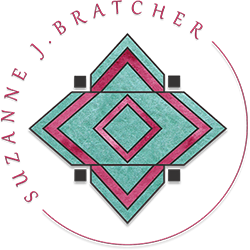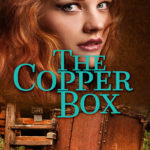
HOW DO YOU WRITE?
If you’ve ever been to a fiction writing conference, you’re familiar with the debate: do you plan first and then write, or do you forget the outline and write from the seat of your pants? Think about your own writing process. You may not write for publication, but when you write a letter or a memo for work or a story about your childhood, do you plan first, or do you just start writing?
Until last week I was certain I was a plotter. Once I have the germ of an idea for a novel, I draw a story arc, divide the arc into three acts, divide each act into scenes, and list goals for each scene. Of course I’m a plotter. Or am I?
PLANNING A BOOK TALK
Last week, I gave my first book talk on my first published novel, The Copper Box. I had an hour, including a few minutes for questions. I decided to focus on the age-old question: “Where do writers get their ideas?” True to my plotter nature, I checked on Google for the optimum length of time to read aloud to an audience (five minutes). I decide to read three selections of five minutes each. That brought me to fifteen minutes. To leave fifteen minutes for questions, I needed to talk about the central idea in each excerpt for ten minutes.
Remembering the prime directive for all writers—show; don’t tell—I searched for Jerome memorabilia that would show where I got the idea for each passage. I chose a copper box, a glass paperweight filled with tropical fish, and a kaleidoscope. Next I made an outline of my presentation, including bullet points of what I would say about each excerpt. Then I practiced, timing with the stopwatch on my phone. Finally I got the presentation to 45 minutes, including a place to stop early if the audience was looking bored, and we all wanted to go home. I was ready.
THE PRESENTATION
On the day of the presentation, I entered the room armed with my outline, my book with the passages carefully marked, and my memorabilia. Excerpt #1 was the copper box. I showed the three-inch by six-inch box I bought on the internet and read the excerpt.
Across the road a sign welcomed visitors to Jerome, the Billion Dollar Copper Camp. Copper for pennies. Copper for boxes. Old mines. Be careful girls! Someone stepped on Marty’s grave, and she shivered. “I don’t believe in ghosts.”
I explained how I kept the little copper box on my desk for inspiration as I wrote the novel. A woman dressed in a green silk shirt and white pants raised her hand. Little did she know she was about to present me with a dilemma that would challenge my self-image as a writer. “I understand why you chose copper,” she said, “but why a box? Why not a plate or a picture frame or a wind chime?”
I shrugged. “The box popped into Marty’s mind when she was driving into town. Marty couldn’t remember what happened to her sister, but she knew if she found this little copper box it would solve the mystery.” Oops…even to my own ears that sounded a lot like an answer a pantster would make. And so it went. The same question about each of my show-and-tell items, the same answer: that’s just what the character thought or said.
FACING FACTS
That night, I faced facts. Am I a plotter or a pantster? I guess I’m both. I plot first, and then I write from the seat of my pants. That’s what I thought until this morning. I sat down at the computer with an outline for an entirely different blog on the topic of writer’s block. But as I started to write, last week’s presentation popped into my mind. I wrote Plotter or Pantster? Here I am at the end, without ever writing a single bullet point. Hmm… Am I a plotter or a pantster? Yes! How about you?
Note: A version of this blog first appeared on the ACFW blog:https://www.acfw.com/blog/plotter-or-pantster-yes/

 A passionate reader, I began writing as a young girl. After graduating from college, I became a teacher. Over the course of my career, I taught high schoolers, college undergraduates, and public school teachers how to write personal narratives, expository and persuasive essays, as well as poetry and short fiction. I continued to write: publishing professional articles, two textbooks, short stories, and poetry. In 2013, I won first place in Romantic Suspense in the ACFW Genesis Contest.
A passionate reader, I began writing as a young girl. After graduating from college, I became a teacher. Over the course of my career, I taught high schoolers, college undergraduates, and public school teachers how to write personal narratives, expository and persuasive essays, as well as poetry and short fiction. I continued to write: publishing professional articles, two textbooks, short stories, and poetry. In 2013, I won first place in Romantic Suspense in the ACFW Genesis Contest.
Leave a Reply